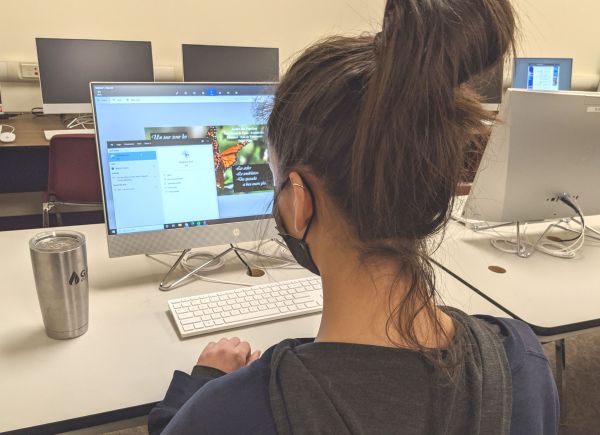

The Joy of a Phone-Free School: How Our Students Thrive Without Screens
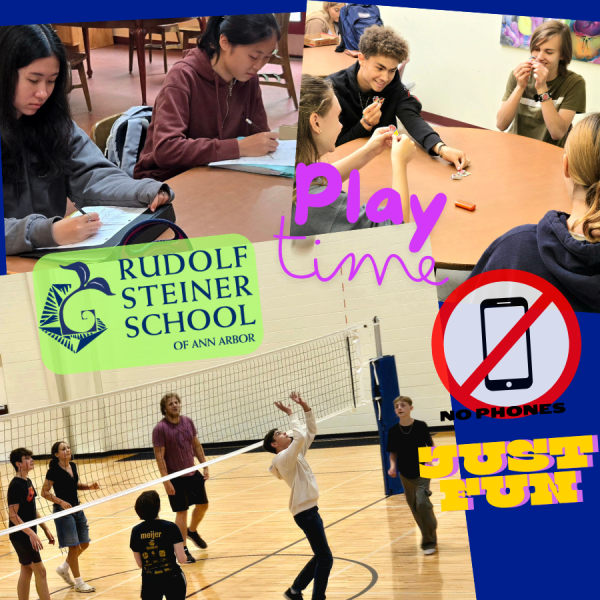
The Joy of a Phone-Free School: How Our Students Thrive Without Screens
Imagine a typical school day where students, between classes and during breaks, are glued to their smartphones—scrolling through social media, playing games, or texting. Conversations are sparse, eye contact is minimal, and the vibrant energy of youthful interaction seems subdued. Now, contrast this with a school environment where smartphones are set aside: students engage in lively face-to-face discussions, participate in spontaneous games, and immerse themselves fully in classroom activities without the constant pull of notifications. This is the reality we’ve cultivated at Rudolf Steiner School of Ann Arbor, embracing a phone-free policy that fosters genuine connections and holistic development.
The Deeper Engagement of Phone-Free Education
At our school, we’ve observed that removing smartphones from the school day does more than just eliminate distractions—it rekindles a deeper, more meaningful engagement among students. Freed from screens, students rediscover the joy of direct communication, collaborative problem-solving, and hands-on learning. This environment aligns seamlessly with the principles of Waldorf education, emphasizing experiential learning and nurturing the whole child.
We Are Phone-Free, Not Tech-Free
While our school maintains a phone-free environment during school hours, we are not devoid of technology. In fact, our curriculum incorporates technology in age-appropriate ways to ensure students are prepared for the digital world:
• Middle School: Students are introduced to computers and the internet in an intentional way that supports learning. Additionally, our middle school robotics club fosters interest in technology and engineering through hands-on projects. https://www.steinerschool.org/programs/extracurricular-activities.cfm
• High School: Our state-of-the-art computer lab facilitates courses in coding, digital literacy, and other computer science subjects. We also have an active high school robotics club where students collaborate on competitive projects that develop real-world problem-solving skills. https://www.steinerschool.org/about-us/waldorf-education.cfm
Many of our graduates go on to thrive in technology fields, excelling in computer science, engineering, and data analysis. Research shows that Waldorf graduates develop strong interdisciplinary thinking skills that prepare them for success in fields that require both creativity and technical expertise.
Leading the Way in Ann Arbor
Our commitment to a phone-free school day positions us as pioneers in the Ann Arbor educational community. While some other local schools have implemented partial restrictions, our comprehensive approach ensures that students remain unplugged throughout the day—including breaks and transitions between classes.
Several Ann Arbor schools are recognizing the value of limiting phone use:
• Forsythe Middle School and Tappan Middle School both require students to keep phones in lockers during school hours. https://forsythe.a2schools.org/our-school/cell-phone-policy, https://tappan.a2schools.org/our-school/cell-phone-policy
• Huron High School has introduced classroom phone storage policies in its Mathematics and English departments to help students stay focused. https://thehuronemery.com/9731/news/cell-phone-use-teacher-led-procedures-to-enrich-student-experience/
The Transformative Power of Disconnecting
The shift to a phone-free environment has yielded profound benefits:
• Enhanced Academic Focus: Without the allure of smartphones, students engage more deeply in lessons, leading to improved comprehension and retention.
• Strengthened Social Bonds: Face-to-face interactions during breaks and collaborative projects foster authentic relationships and empathy among students.
• Improved Mental Well-being: Reducing screen time has been linked to decreased anxiety and stress, allowing students to be more present and mindful.
Embracing a Connected Future Without Phones
As more schools recognize the value of limiting smartphone use, it’s evident that this movement is not about restricting technology but about reclaiming the essence of human connection and focused learning. By leading the way in this initiative, Rudolf Steiner School of Ann Arbor not only adheres to the foundational principles of Waldorf education but also prepares students for careers in STEM, the arts, and beyond.
We invite families seeking a nurturing, distraction-free educational environment to join us in this journey, where students can truly engage with the world around them and develop into well-rounded individuals.
Explore the experiences of other schools with phone-free policies:
• “New data reveals shocking trend since school mobile phone ban”
- “The big smartphone school experiment”
https://www.thetimes.co.uk/article/inside-schools-ban-smartphones-6knb8qtfc
- “Cell phones hinder classroom learning. Texas should tell school districts to lock them up”
- "Waldorf Schools are Media Literacy Role Models"
https://www.steinerschool.org/about-us/waldorf-schools-are-media-literacy-role-models/
Unplugged and Having Fun!
A TECH-FREE SUMMER MIGHT BE THE BEST SUMMER EVER!
The Importance of Play
Take a minute to think of a joyful childhood memory when you were engaged in play. Perhaps from summer camp or somewhere else. Where were you? Who was there? What were you doing? Was a smartphone involved? OK, now fast forward to today. Do you see kids playing in the same way you did as a child? Playing more? Playing less? Do your kids play as freely as you did as a child, with the same amount of supervision?
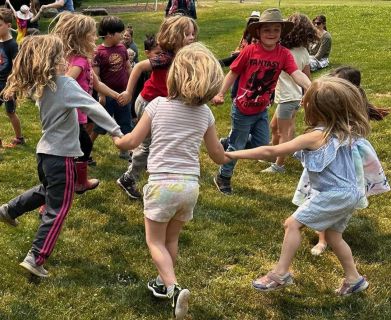
It’s no secret that kids love to play. When left to their own devices, kids can play all day in very creative ways. They make up stories, skits, games and songs. They immerse themselves in make-believe or lose themselves for hours in a book. Summer is an incubator of play, and there can be many unplanned moments of spontaneous play throughout the day. It’s a gift that cultivates joy. And, it’s also a critical pathway through which kids learn, grow, and develop into adults who can successfully navigate the world around them.
Child-directed play is important for social-emotional growth, developing social skills, and building strong friendships. It allows kids to explore social interactions in low risk situations. “Getting repeated feedback in a low-stakes environment is one of the main ways that play builds social skills”. When kids play together they learn to notice and interpret social cues, listen, take another person’s perspective, and share ideas and feelings in the process of negotiating and compromising. In his Ted Talk, The Decline of Play, psychologist Dr. Peter Gray further advocates for the importance of play. “Play is nature’s way of ensuring that …young human beings…acquire the skills that they need to develop successfully into adulthood”. When you allow your kids time for undirected play, they’re not only having fun, they’re cultivating tools that will support them in navigating life.
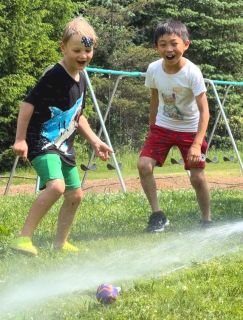 Watching a group of students playing in the sandbox, it is evident how play helps kids learn to collaborate. The kids will take on different roles. One digs channels with the shovel, and another gathers sand with a bucket. Some are in charge of detailing a structure, while others step back and plan the next expansion. When one student wants to change roles, they have to ask another to swap tools and positions. Sometimes changing roles requires negotiating how much longer each of them will continue in their current role before switching. If one doesn’t agree with another’s suggestion he or she might respond, “I don’t think that’s fair”, leading the others to consider what might feel fair to them. They nearly always find a compromise. In many ways, play is the antithesis of heavy social media use. The act of play places kids in situations where they are continually learning, connecting, increasing their empathy, trying new modes of social engagement, and have the time and space for observation and contemplation that help them process their social experiences.
Watching a group of students playing in the sandbox, it is evident how play helps kids learn to collaborate. The kids will take on different roles. One digs channels with the shovel, and another gathers sand with a bucket. Some are in charge of detailing a structure, while others step back and plan the next expansion. When one student wants to change roles, they have to ask another to swap tools and positions. Sometimes changing roles requires negotiating how much longer each of them will continue in their current role before switching. If one doesn’t agree with another’s suggestion he or she might respond, “I don’t think that’s fair”, leading the others to consider what might feel fair to them. They nearly always find a compromise. In many ways, play is the antithesis of heavy social media use. The act of play places kids in situations where they are continually learning, connecting, increasing their empathy, trying new modes of social engagement, and have the time and space for observation and contemplation that help them process their social experiences.
Free play also supports cognitive development, especially in younger children. It has been shown to increase neural connections in the brain (increasing pathways we use for critical thinking), build and strengthen the prefrontal cortex (the area of the brain responsible for decision-making, attention, problem-solving, impulse control, and planning), and support language skills. And while kids are playing, the absence of technology relieves the pressures of social media and actually helps kids sleep better. When humans view screens late at night they inevitably get less sleep, and they also lose out on the deep REM stage of sleep, which is critical for helping process and store events from the day into memory.
Today, our youth are spending less time engaging in self-directed play and more and more time on screens. A recent study found that in 2021, tweens (ages 8-12) spent about five and a half hours a day on screens, while teens (ages 13 to 18) spent about eight and a half hours a day on screens. Recent data released by the National Survey of Children’s Health found that in 2020 only 19.8% of school-aged children were physically active for at least one hour per day. How is this affecting our kids? And why is it essential to provide kids spaces where they can play and create together without the distractions of modern technology?
Social Media and Youth Mental Health
In 2007, Apple first released the iPhone and by 2012 had sold about 270 million units, equivalent to the population age 10 and older in the United States at that time. Translation - smartphones proliferated very quickly into modern society. And today there is a growing body of research that suggests heavy social media use is adversely impacting youth development.
According to Dr. Michael Rich, Associate Professor at Harvard Medical School, kids’ developing brains make it harder for them to limit their time on screens. Social media utilizes the same variable reward system that makes gambling so addictive. Unlike adults, a young person’s brain lacks a fully developed system of self-control to help them with stopping obsessive behavior. In a 2022 Pew Research Center study of American teenagers, 35% responded that they were using one of the top five social media platforms (YouTube, TikTok, Instagram, Snapchat, or Facebook) online “almost constantly”. And with the proliferation of smartphones and social media, rates of juvenile anxiety and depression have risen. From 2016 to 2020, researchers analyzing data from the National Survey of Children’s Health found that rates of anxiety and depression increased 29% and 27%, respectively, for children ages 3-17.
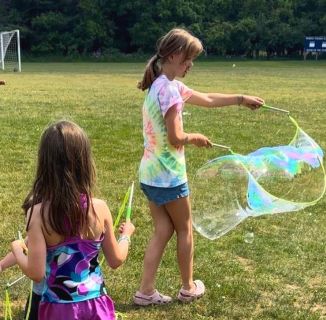 Dr. Jonathan Haidt, a social psychologist and Professor of Ethical Leadership at the NYU Stern School of Business, and Dr. Jean Twinge, Professor of Psychology at San Diego State University, have been compiling research about the links between social media and adolescent mental health. Through their work, they have found that many studies, using a variety of methods, suggest a strong link between heavy social media use and poor mental health, especially for girls.
Dr. Jonathan Haidt, a social psychologist and Professor of Ethical Leadership at the NYU Stern School of Business, and Dr. Jean Twinge, Professor of Psychology at San Diego State University, have been compiling research about the links between social media and adolescent mental health. Through their work, they have found that many studies, using a variety of methods, suggest a strong link between heavy social media use and poor mental health, especially for girls.
Haidt also notes that Instagram especially magnifies pressures for teens. “Social media—particularly Instagram, which displaces other forms of interaction among teens, puts the size of their friend group on public display, and subjects their physical appearance to the hard metrics of likes and comment counts—takes the worst parts of middle school and glossy women’s magazines and intensifies them”. Teens especially, can obsess over what they post on platforms like Instagram, “even when the app is not open, driving hours of obsessive thought, worry, and shame”.
Dr. Jenny Radesky, Assistant Professor at University of Michigan Medical School, focuses her research on the intersection of mobile technology and child development. Radesky (2018) surveyed a thorough study that suggests high-frequency digital media use is linked to an increase in new ADHD symptoms amongst teens, and researchers are also finding that heavy social media use leads to an increase in narcissistic behavior.
On a hopeful note, there is evidence that we get relief when we take a break from social media. Many experiments have shown that reducing or eliminating social media use for a week or more improves our mental health.
At Steiner, we understand that technology is a tool that our students will need in today's world. We recommend no technology for our youngest students and teach responsible use of it starting in middle school. Supporting this “slow-tech” approach, a break from technology has amazing value in helping kids understand and feel the benefits of spending time away from screens. As we end another school year and students have some much-needed free time, you might look for ways to preserve time for your children to play together without technology.
Waldorf Schools are Media Literacy Role Models
Waldorf education emphasizes thoughtful, intentional and developmentally appropriate technology use. We advocate for an experiential, relationship-based approach in early education, followed by a curriculum for older students that helps them understand tech as a tool, and engages them in conversations around digital ethics, privacy, media literacy, and balanced use of social media and technology. Our approach gives Waldorf graduates the tools and knowledge they need to be independent, creative, and ethical digital citizens. At Rudolf Steiner School of Ann Arbor, Cyber Civics is a required class in grades 6-8 and Computer Science and Programming are taught at the high school level.
This post was written by Soni Albright and originally published on cybercivics.com
As we celebrate Media Literacy Week… it’s hard to believe that Waldorf schools in North America have been leading the way when it comes to Media Literacy education.
What’s that? Waldorf schools and “Media” Literacy?
Do you mean those schools that are notoriously low-tech, and focus on things like face-to-face communication, hands-on learning, the great outdoors, and an art/music/movement integrated curriculum?
Yep, those schools!
Cyber Civics was founded at a public charter Waldorf school —Journey School—in 2010. Since its inception, most Waldorf schools (private and public) in North America, and many more internationally, have adopted the Cyber Civics program in their schools, and the vast majority have been teaching the lessons—which include digital citizenship, information literacy, and media literacy— since 2017.
Fast forward to 2021. The United States and most of the world is just now talking about the ‘need for digital citizenship’ and the importance of ‘educating our youth’ about media use, misinformation, balance and wellness and, most importantly, how to use tech ethically and wisely.
People worldwide are asking themselves “How do we control this Pandora’s Box after the pandemic? What can we do to help our kids help themselves in the digital landscape?”
All the while, Waldorf schools have been quietly holding this conversation with intentionality and patience: asking families to be thoughtful, mindful, discerning, and slow with media access for children. Not to deprive them, but rather to give children the gift of childhood—the endless opportunities that come with downtime, boredom, and unscheduled freedom. To favor face-to-face interactions over abstract experiences. To work on self-regulation, problem solving, physical movement, and social-emotional regulation.
By the time Waldorf students get to middle school, even though many aren’t using digital media at the same level as average kids their age, most are participating in weekly Cyber Civics lessons ranging from simple concepts such as what it means to be a citizen in any community and how to apply that to the digital world to more advanced topics such as: privacy and personal information, identifying misinformation, reading visual images, recognizing stereotypes and media representations, and ethical thinking in future technologies.
While many middle school students know their way around the device / app / platform, they haven’t been trained much in ethics, privacy, balance, and the decision-making aspects actually needed to survive and thrive in the digital age during adolescence.
We are so grateful for all the Waldorf schools that recognized the need for this important curriculum years ago, and who have grown with us over the years. We have learned with you, about our young people and what they need from us as examples and digital citizens.
Thank you for paving the way for this curriculum to be brought to so many other schools and community groups beyond the Waldorf sphere—public and private schools... Catholic, Hebrew, Montessori, and more.
And please take a bow for being the Media Literacy role models the world so desperately needs.
